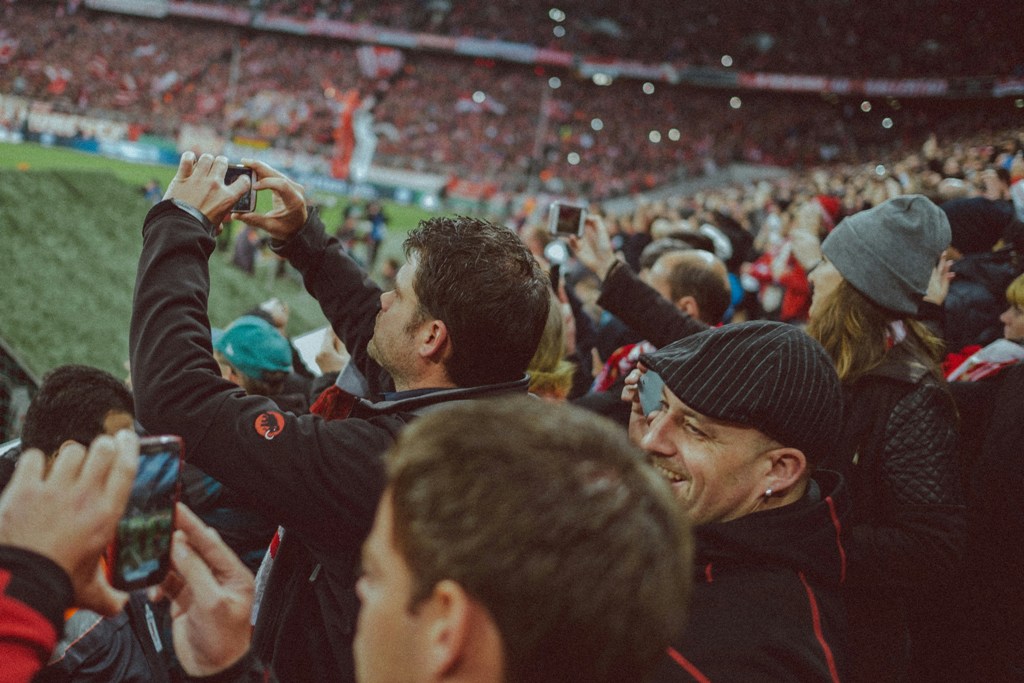The Art of the Game: How Football Tactics Have Evolved in the Last Decade
In the dynamic sport of football, team strategies and plans have seen a significant change during the past ten years. Playstyles and strategic plans have changed dramatically, and teams’ approaches to the beautiful game have also changed significantly. Football tactics and techniques changed in a way that significantly affected the game’s foundations. As the relationship between football matches and cunning tactical maneuvers became more apparent, teams worldwide adjusted and improved their strategies in response to the changing demands of the game.
Understanding the intrinsic link between football tactics and strategies and the overarching success of teams highlights the paramount importance of tactical understanding in the contemporary football landscape. The strategic choices made by coaches and players determined the outcomes of football matches and played a decisive role in shaping broader narratives, impacting the fabric of the sport itself. As we delve into the subsequent sections, this exploration will unfold, shedding light on the intricate dance between football predictions and the nuanced world of tactical evolution.
Table of Contents:
– How do tactics shape football matches?
– What football predictions reflect lasting effects?
– Are football’s best players impacted?
– Why have football tactics and strategies evolved?
– How did factors influence football predictions?
Decade Overview

2013 – Pioneering Shifts
The inception of the decade laid the groundwork for innovative football tactics and strategies. Teams experimented with fluid formations, introducing tactical nuances that would redefine the game. This year marked a turning point as coaches emphasized adaptable systems, foreshadowing a decade of tactical diversity. The intersection of football tactics and strategies with on-field execution became increasingly intricate, setting the stage for tactical evolution.
2016 – Tiki-Taka Renaissance
A return to the famed Tiki-Taka style enthralled football fans worldwide in 2016. Teams embraced possession-oriented play, emphasizing quick passes and spatial awareness. This tactical revival showcased the enduring influence of football tactics and strategies as Tiki-Taka’s reincarnation redefined team dynamics and strategic thinking. Coaches navigated the delicate balance between possession-based approaches and incisive attacks, impacting the outcomes of football matches.
2018 – Counter-Pressing Revolution
The World Cup year 2018 witnessed a global shift towards high-intensity counter-pressing. Coaches strategically deployed players to regain possession swiftly, disrupting opponents and transforming defensive strategies. The intricate dance between tactics and strategies in football and the execution of counter-pressing became a hallmark of successful teams. This tactical evolution influenced individual matches and became a benchmark for excellence in modern football.
2020 – Hybrid Formations
The last year of the decade saw a surge in hybrid formations, blurring traditional positional lines. Teams embraced tactical fluidity, seamlessly transitioning between formations within a single match. The relationship between adaptability and strategic planning reached new heights, underlining the indelible impact of football tactics and strategies on contemporary games. This evolution set the stage for the next decade, promising continued innovation in the dynamic world of football.
Detailed Analysis of Each Year

2013
Breakdown of the significant tactical shifts:
2013 laid the groundwork for tactical innovation, with a noticeable shift towards possession-based play and intricate build-up strategies. Teams explored new ways to dominate the midfield, emphasizing ball control and precise passing.
Key strategies used by the teams:
– Implementation of tiki-taka style with quick, short passes.
– Emphasis on controlling possession to dictate the rhythm of matches.
Moments of change in the tactics’ evolution:
The rise of Barcelona’s dominance using possession-oriented tactics set the stage for broader adoption of similar strategies across various leagues.
Impact of these tactics on the game:
The tactical shift in 2013 elevated the importance of midfield control, influencing team dynamics and shaping the overall aesthetics of football matches.
2016
Breakdown of the significant tactical shifts:
A surge in tactical diversity characterized 2016, with teams experimenting across various formations and playing styles. Coaches showcased adaptability, introducing innovative strategies to gain a competitive edge.
Key strategies used by the teams:
– Experimentation with diverse formations.
– Varied approaches to build-up play, from possession to direct counter-attacks.
Turning points in the evolution of tactics:
The 2016 tactical experiments demonstrated how teams may adjust to various tactical conditions, highlighting the value of flexibility.
Impact of these tactics on the game:
The tactical diversity witnessed in 2016 enhanced the unpredictability of football matches, challenging opponents to prepare for a spectrum of playing styles.
2018
Breakdown of the significant tactical shifts:
A paradigm shift occurred with integrating advanced analytics in tactical decision-making. Teams began leveraging data-driven insights to optimize strategies, influencing game plans and football predictions.
Key strategies used by the teams:
– Use of analytics for player performance evaluation.
– Data-driven insights for tactical adjustments during matches.
Turning points in the evolution of tactics:
Adopting advanced analytics marked a significant step towards a more analytical and evidence-based approach to football tactics and strategies.
Impact of these tactics on the game:
The incorporation of analytics in 2018 influenced tactical decisions and shaped how football predictions are made, adding a new layer of sophistication to the sport.
2020
Breakdown of the significant tactical shifts:
2020 presented unique challenges, with the global pandemic impacting the football calendar. Teams had to adapt tactically to condensed schedules, empty stadiums, and the increased importance of squad rotation.
Key strategies used by the teams:
– Emphasis on squad rotation due to congested fixtures.
– Adjustments to playing styles in the absence of fan support.
Turning points in the evolution of tactics:
Because of the unusual circumstances in 2020, teams were compelled to reevaluate their plans, showcasing the adaptability of managers and players in unexpected situations.
Impact of these tactics on the game:
The tactical adaptations in 2020 influenced the outcomes of football matches and highlighted the resilience and flexibility of teams in the face of adversity.
Key Matches
|
Match (Teams Involved)
|
Tactical Shift |
Impact of the Shift |
|
Barcelona vs Bayern Munich (2013)
|
Introduction of Possession-based Play |
Elevated Importance of Midfield Control |
|
Borussia Dortmund vs Liverpool (2015)
|
Surge of High-Pressing Systems |
Intensification of Football Matches, Emphasis on Quick Transitions |
|
Real Madrid vs Juventus (2016)
|
Tactical Diversity Takes Center Stage |
Increased Unpredictability with Varied Formations |
|
Manchester City vs Liverpool (2018)
|
Integration of Advanced Analytics |
Tactical Decisions Empowered by Data |
|
PSG vs Bayern (2020)
|
Facing Unprecedented Challenge Adapts |
Showcase of Team Resilience, Adaptability to Unique Circumstances |
Impact of the Evolution: Shaping the Football Landscape
Football tactics and techniques have undergone a dynamic evolution that has profoundly changed how teams approach the game and left an enduring impression on the football globe. In response to these tactical changes, coaches and players have encouraged a new wave of creativity.
Tactical Adaptations:
Teams have embraced a more versatile and adaptive playing style inspired by tactical breakthroughs. The influx of diverse strategies, witnessed in each passing year, has led to an increased emphasis on tactical flexibility. Whether it’s the implementation of possession-oriented play, high-pressing defensive systems, or the integration of advanced analytics, these adaptations have reshaped the fabric of football matches, demanding a multifaceted approach to success.
Player Performances in the Tactical Landscape
The evolution of football tactics and strategies has been a driving force in reshaping player performances. In this dynamic landscape, marked by the unpredictability of football matches on Tips.GG, skill sets have evolved. The focus now rests on technical proficiency, strategic intelligence, and adaptability. Players excelling in executing contemporary tactics thrive on the field and redefine the criteria for what makes a football the best player, influencing even the realm of football predictions.
Fan and Analyst Reactions
Football fans and astute observers have expressed a wide range of opinions in response to developing tactics and plans in the game. Diverse viewpoints regarding the strategic direction of football have the evolving nature of football matches and their consequent influence on football predictions.
Fan Sentiments:
Fans, the game’s heartbeat, have shared their views on social media platforms and fan forums. One supporter expressed, “The tactical innovations add excitement to the game, making every match a chess match of strategies.” Another fan said, “It’s fascinating to see how teams adapt – a testament to the beautiful complexity of football.”
Analyst Insights:
Noteworthy analysts have weighed in on the tactical shifts. An analyst remarked, “The tactical evolution challenges teams to find the right balance between flair and functionality.” Another analyst emphasized, “We’re witnessing a shift towards data-driven decision-making, impacting not just results but the very essence of football.”
The amalgamation of these fan sentiments and analyst insights paints a vivid picture of the multifaceted impact of football tactics and strategies on the broader football community. The dialogue between fans and analysts continues to enrich the narrative of the beautiful game.
Conclusion:
The journey through the last decade unveils a profound transformation in football tactics and strategies. The evolution has left an indelible mark, from the strategic dance on the pitch in crucial football matches to the intricate art of making accurate football predictions. As teams adapt and players redefine excellence, the dynamic interplay between football’s best players and evolving tactics is a testament to the enduring beauty and unpredictability of the world’s most beloved sport.





